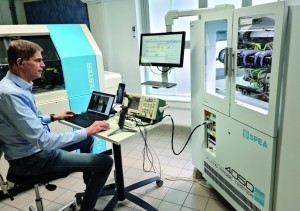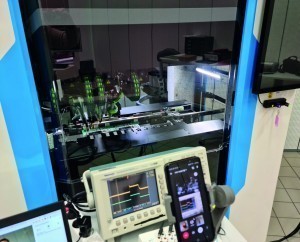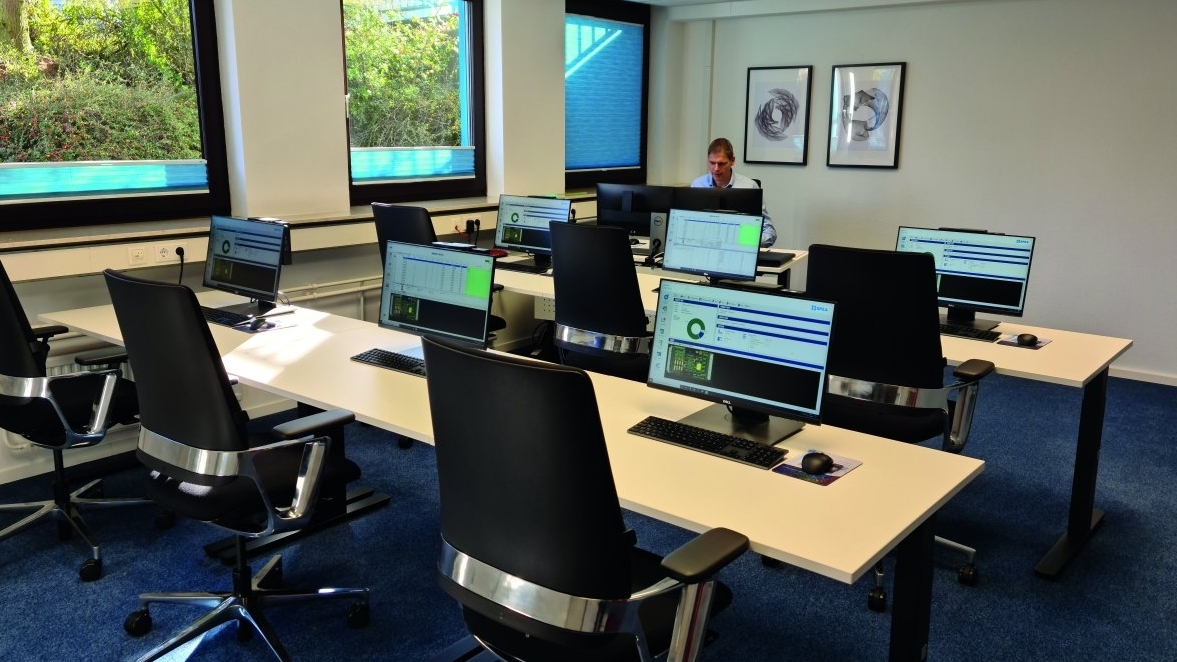Traditional training courses are currently not possible, and external visits are only possible in urgent cases in most companies. How can education and training be designed online in such a way that they achieve the efficiency of face-to-face events?
The topic of online training and the switch from face-to-face to digital events has become an increasingly important topic in recent months due to coronavirus. But how can training content be conveyed in a clear way digitally and without direct personal contact with the participants? How can training courses whose content also includes working on systems and devices be replaced? Faced with this challenge, a lot of conceptual work was carried out at SPEA. After all, the previous face-to-face training courses could not be dispensed with without replacement.
Given the complexity and possibilities of modern test systems, the training of those who work with the system is important for the most effective and successful use of the tester. When a system is purchased, the training is booked at the same time and ideally completed before the tester is installed. This means that the system can be used productively immediately after commissioning.
The content of the training courses is practice-oriented and takes into account the individual testing requirements of the participants. The training is divided into two blocks:
- Training block 1 - Practical theory
- Training block 2 - practice on the system.
In Block 1, participants work directly with the test system software and create a training project. Each training participant has their own computer on which the programming environment is installed. This means that from the outset, participants work with the interface that they will later use in their own company. A training project means that a real test program is created for a module, which includes various test requirements and options. Of course, individual requirements and questions from the training participants are also taken into account. Fig. 2: A combination of TeamViewer-Meeting and GoogleMeet enables both remote access to the computers and communication with each other
Fig. 2: A combination of TeamViewer-Meeting and GoogleMeet enables both remote access to the computers and communication with each other
To ensure that the participants have the same basic knowledge at the start of the training, they complete specified online courses from the SPEA Academy in advance of the training. This is an online platform for self-learning and further training. Special basic courses are used as preparation for the training. Later, customers can log in and complete courses or learning videos on a wide range of topics. The SPEA Academy library is constantly being updated and expanded.
Block 2 then moves on to the test system. This is where the training project is taken over. The possibilities of debugging are also part of the training content. SPEA focuses on practical experience. The training participants not only watch, but are also expected to solve the problem themselves. Each participant takes on various tasks directly on the test system. Individual participant tasks are also taken into account here.
Well thought-out online training
According to the design considerations, participants in online training should be taught the same content as in classroom training. Active participation in practice should also be made possible. It was therefore clear that a purely online presentation by SPEA, in which the training participants could only listen, watch and ask questions from time to time, was out of the question. The result was a training course that actually offers participants the same practical opportunity and exactly the same content as the classroom training.
Virtual classroom - training block 1
Since Corona has made face-to-face training impossible, the trainer sits in an empty room in front of a series of switched-on training computers. The training participants take part in the training either from the company or from their home office. Each individual is connected to 'their' training computer and has full remote access. This remote access takes place via TeamViewer meeting using the SPEA license. This means that participants do not have to install any software. This is a clear advantage, as in most companies IT does not allow the installation of third-party or additional software for security reasons. An invitation link is sent out in advance of the training, which the training participant can use to log into the meeting via a web browser. After verification and activation by the SPEA employee, the participants then have full access to the programming environment. Just as if they were sitting at the computer in the training room. The training project is created in exactly the same way as in classroom training. The only difference is that the participants take part from home or the company.
Communication with each other is also easy online
Access to the computer is one part, communication with the trainer and the participants is the other. This part is realized by GoogleMeet. Participants do not need to have their own Google account. The participants log in via an invitation link. This allows them to communicate both with the trainer and with each other - almost as if they were on site. Fig. 3: Online practice on the system: the training participants have remote access to the tester software and the test system
Fig. 3: Online practice on the system: the training participants have remote access to the tester software and the test system
Online practice - training block 2
In the second block of the online training course, participants also go live on the test system. And the same content is offered here as in the classroom training. The only difference is that the participants cannot touch the tester.
This is again made possible by the combination of TeamViewer-Meeting and GoogleMeet. With the help of the former, the participants connect live to the tester's software environment and thus have full access to the machine. The other tool is used for communication with the trainer and with each other.
The practical part on the test system includes the transfer of the created test program, debugging and real test operation. A second camera is pointed at the test system and connected devices (e.g. oscilloscope) so that the training participants can see what they are doing. This means that they not only have the trainer and the system software in view, but also the tester himself, so that when they make entries in the console, they also directly experience the execution by the tester.
In debugging, the participants take it in turns to adjust certain parameters that can be optimized for the execution of the test program. Access is only granted to the person who is currently performing tasks on the system. Once the test program has been accepted, complete debugging is carried out as it would be in production. This is followed by test operation. At all points, the participants are confronted with problems as they might occur in real operation. Individual requirements and questions from the participants are also discussed and simulated. Fig. 4: A second camera is pointed at the tester and connected devices (oscilloscope in this case) so that the training participants can also see the tester running after entering commands in the software - including measurement results
Fig. 4: A second camera is pointed at the tester and connected devices (oscilloscope in this case) so that the training participants can also see the tester running after entering commands in the software - including measurement results
At the end of the training, the training participants have the opportunity to ask questions and discuss certain things again. They are also introduced to additional test system tools and other test methods so that they get a comprehensive picture of their system. And, of course, they can continue to use the SPEA Academy to deepen, refresh or expand their knowledge. It is also an excellent way to practise certain techniques and methods.
Conclusion:
There is no substitute for face-to-face meetings. But if this is not possible - as is currently the case - a well-structured online training course is in no way inferior to face-to-face training when it comes to conveying the content and the opportunity to practice what has been learned. And if the lack of physical presence is a disadvantage, the elimination of travel time and travel costs may be an advantage.


